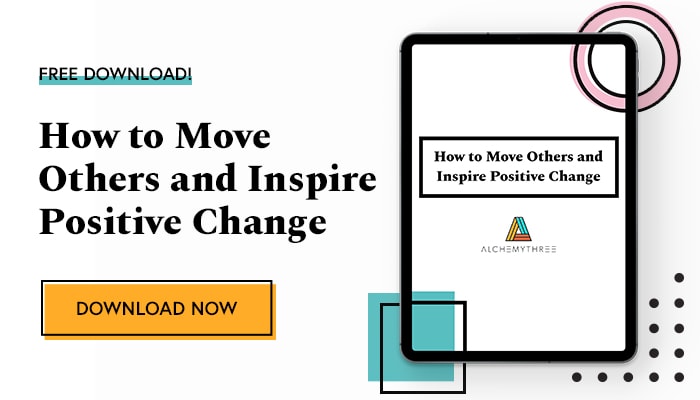Regardless of the goal — or series of goals–in question, we are all working to shape situations and interactions into something positive and productive–landing a mutually beneficial agreement on both sides of the table. As business owners, freelancers, entrepreneurs, parents, neighbors, we are all engaged in some form of sales each and every day.
But for some of us, to say that we are in the business of selling or to admit that we’re a salesperson just doesn’t feel that great. Maybe it doesn’t jive with our personality. Some of us lack confidence. We’ve internalized this concept of sales as being pushy, aggressive, greedy, dishonest. You need to be a tough guy, badass, asshole to close the deal.
Back in the day, salesperson held most of the proprietary information available and the buyer had to rely on them to make a final decision. But over the last few decades, there’s been a massive shift. As consumers, we don’t rely on salespeople as gate keepers of information. With the help of the internet we can take complete control, read reviews and run all kinds of research on our own.
We need to leave the old salesperson trope behind and embrace what it really means to sell. Selling a product or service should never feel like you’re pulling a fast one on somebody. To sell is to move people–to guide them–in a mutually beneficial direction.

From Problem Solving to Problem Finding

Most people–or in our case, prospective clients–are convinced that they already know what the problem is, so they’re shopping–which really means bargain hunting–and this triggers what we’ve all come to know as: a race to the bottom. So if you engage by being the loudest or the cheapest or the ballsiest, chances are you’re going to short change yourself and set a precedent that will be hard to back out of later on.
How to become a better problem finder
When a lead comes to you with an issue or pain point, you’re actually in a very unique position to provide a valuable outside perspective. You make a shift from being a problem solver to a problem finder. When you become a creative problem finder your place of authority is heightened and you’re easily differentiated from the pack. You become a different breed entirely — an empathic, collaborative breed who listens more than she talks.
As an outsider, you are positioned to see, hear and feel more than your prospect if you’re willing to open yourself to it. Here are a few negotiation tactics and a sprinkling tactical empathy.

Active Listening
It always begins and ends with the art of crafting relevant follow-up questions that clearly prove to the other side that you’re paying attention.
So here are a few tips for conjuring great follow-up questions with the spirit of active listening:
1. Leverage open-ended questions
 A yes or no question eliminates the possibility of capturing valuable, sometimes rambling information. Yes/no questions can also imply or give the impression that you’re gunning for the sale as opposed to reaching a collaborative agreement.
A yes or no question eliminates the possibility of capturing valuable, sometimes rambling information. Yes/no questions can also imply or give the impression that you’re gunning for the sale as opposed to reaching a collaborative agreement.
The common sales phrase is “Get to Yes”. But the problem with pushing for a hard and fast yes, often results in an inauthentic, counterfeit yes. Which, of course, is not ideal.
2. Go for ‘No’ as opposed to ‘Yes’

What’s interesting and so much more impactful about ‘no’ is that there is a sense of safety and an inherent protection in the word ‘no’. When we say ‘no’ to a question we feel grounded and safe and uncommitted. We don’t always like to hear ‘no’, but saying ‘no’ in a situation when it’s important to feel in control can make all the difference in how a negotiation plays out.
On the flip side, when we say ‘yes’ to something, we can also feel like every additional piece of information that we provide following that ‘yes’ is another commitment to be made.
So when we guide our counterpart to a place where they can say ‘no’ it anchors them in a place of safety and control. So when they offer information after that ‘no’ the other side is free of attached strings or commitment.
What I like to do is create a feedback loop (which is a summary of things they’ve already said, but I put it in my own words. This shows empathy and that you are further validating their concerns) and I combine this summation with a ‘no’ centric question.
It takes some practice and feels funny at first. But by prompting the other side to say ‘no’ you are helping to subconsciously ease their fear of commitment and you’re forging trust in the process.
3. Learn to shut up more and embrace a little awkward silence

Don’t forget to SHUT UP once in a while. Silence is powerful and it can be awkward and takes a lot of practice. Many of us have the temptation to fill the silence and blather on and on. There’s uncertainty and discomfort in silence so we want to fill in the cracks with lots of words and explanations. Resist the urge to do this. Silence gives your counterpart a chance to think, reflect and react. And to expand and build clarity around the potential agreement.
Consider listening TWICE as much as you speak. Admittedly this is very hard and takes a lot of practice–but this approach allows you to pick up on mannerisms and read a room more effectively. And will also leave a much better impression on your counterpart as a result.

Negotiation & Building Rapport
You’ve unearthed an interesting problem that, once managed, will have a larger impact on the success of your counterpart. They are excited to move forward. But now you need to get a commitment from the other side. This means landing on a price and terms that are aligned with the value and expertise that you and your team bring to the project. You continue to use your active listening techniques but also entering the next phase which is : the negotiation
We are all in a negotiation most, if not all, of the time. Any time you or your counterpart says ‘I want’ or ‘I need’ you’re in a negotiation.
When entering any kind of negotiation, it’s imperative that you remind yourself that this is not a win/lose situation; in fact, your adversary in all of this is the problem/hurdle itself not your counterpart. You’ll be much better off if you come from a place of collaboration.

Techniques to an Effective and Conducive Collaboration
Each of these approaches do 2 things; they demonstrate understanding while simultaneously buying you time to hone your response.
1. Mirroring

Mirroring is when you repeat the last 2-4 words back to your counterpart in an open and inquisitive manner.
This is such a valuable technique because they will be encouraged to elaborate and provide additional context that you can use. Also with the right tone of voice and coming from a place of genuine curiosity, they’re going to realize that you’re working with them, not against them. Mirroring solidifies the fact that you are listening to them and it allows you to tease out information in a gentle, inquisitive and innocuous manner.
It can also help with a tendency many of us have to fill the silence. It encourages the other side to expand and divulge valuable additional information.
2. Labeling

It is a verbal observation which also supports active listening. Labeling is exactly how it sounds, you are paraphrasing/acknowledging something on the other side of the table. Now the trick is, labeling always begins with:
- It seems like
- It looks like
- It sounds like
- It feels like
Now notice, these statements avoid the use of ‘I’ as in ‘I feel like’ or ‘what I’m hearing is’. That’s because, once you make these first person statements there is a self-centering component that you want to leave out of the mix. It’s what’s considered a pattern interrupt and you want to avoid throwing a wrench in the conversation flow.
3. Calibrated Questioning

Calibrated questions are open-ended and are calibrated in that they begin with the words ‘what’ and ‘how’. First people love to be asked what to do…and how to do something. It makes them feel in control.
Some of us might be tempted to use the word ‘why’. We are told to find our why–and help others to identify and achieve their why–which is great and very foundational from a brand perspective. But in a negotiation setting, when you ask someone ‘why’ it can feel accusatory. In fact, ‘why’ can trigger a defensive reaction–it implies blame and criticism. So, asking ‘why’ can interfere with your rapport and should be avoided.
But beginning a question with ‘what’ and ‘how’ takes the sting and defensiveness out of the question.
Practice makes better, not perfect. Mastery of these techniques doesn’t happen overnight and you’ll need to apply it in ways that suits your communication style. Remember: if it doesn’t feel awkward you aren’t doing it right. Awkwardness and discomfort = change. It means you’re learning and pushing yourself to be better.
What’s worked for me is to practice in situations with very low stakes. Like the barista at my favorite coffee shop or practicing on my kids. It’s a judgment free zone and if the conversation goes south or gets weird you can abort the mission and try again tomorrow.




